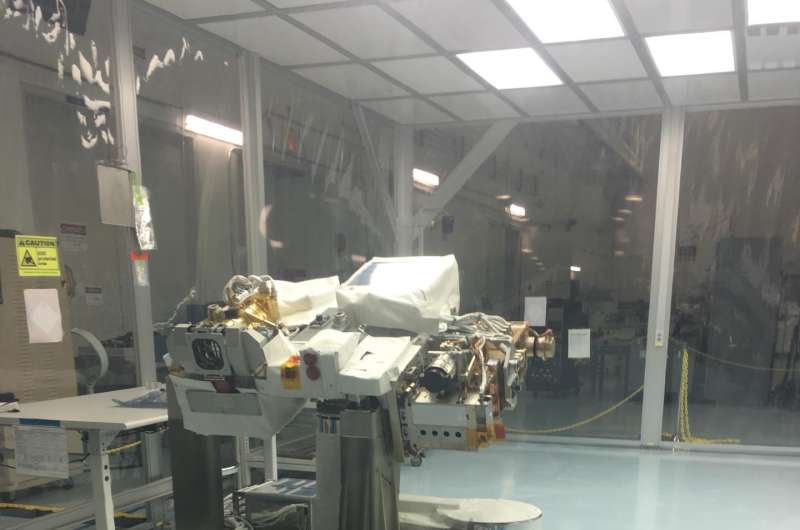NASA instrument key to understanding solar powered planet arrives at Kennedy Space Center

A new instrument that will monitor our planet's biggest power source, the Sun, arrived at NASA's Kennedy Space Center in Florida. It has a targeted November 2017 launch on a SpaceX Falcon 9 rocket to the International Space Station. The Total Solar and Spectral Irradiance Sensor (TSIS-1) instrument was built by the University of Colorado's Laboratory for Atmospheric and Space Physics (LASP) for NASA's Goddard Space Flight Center in Greenbelt, Maryland.
Scientists will use TSIS-1 to study the Sun's energy input to Earth. Specifically, it will measure both the total amount of light that falls on Earth, known as the total solar irradiance, and how that light is distributed among ultraviolet, visible and infrared wavelengths, called solar spectral irradiance.
"We need to measure both because both affect Earth's climate," said Dong Wu, the TSIS-1 project scientist at NASA Goddard.
TSIS-1 will make these measurements with two sensors: the Total Irradiance Monitor and the Spectral Irradiance Monitor. These sensors advance previous measurements and are designed to see the tiny changes in solar irradiance, enabling scientists to study the Sun's natural influence on Earth's ozone layer, atmospheric circulation, clouds and ecosystems.
Scientists use the total solar irradiance measurements to quantify the variations in the Sun's total amount of energy. Satellites have captured a continuous record of the total solar energy input to Earth since 1978, and have seen tiny fluctuations in solar energy output over the years. Most scientists believe the 0.1 percent variation in the Sun's irradiance is too subtle to explain Earth's recent warming, but it's not impossible that long-term patterns proceeding over hundreds or thousands of years could cause more severe swings that could have profound impacts on climate. Scientists believe there could be a 100- or 200-year cycle of gradual heating up and cooling down periods for the Sun.
"We need to continue to monitor the Sun over longer periods during which the irradiance may change gradually but significantly," said Peter Pilewskie, TSIS lead mission scientist from LASP in Boulder, Colorado. "How the atmosphere responds to subtle changes in the Sun's output helps us distinguish between natural and human influences on climate."
Scientists also study the solar spectral irradiance, the distribution of the Sun's energy across its constituent wavelengths, because different wavelengths of light are absorbed by different parts of the atmosphere. For instance, the ozone layer is Earth's natural sunscreen and protects life from harmful ultraviolet radiation. TSIS-1 measurements of the Sun's ultraviolet radiation are critical to understanding the condition of this protective ozone layer.
Provided by NASA's Goddard Space Flight Center





















